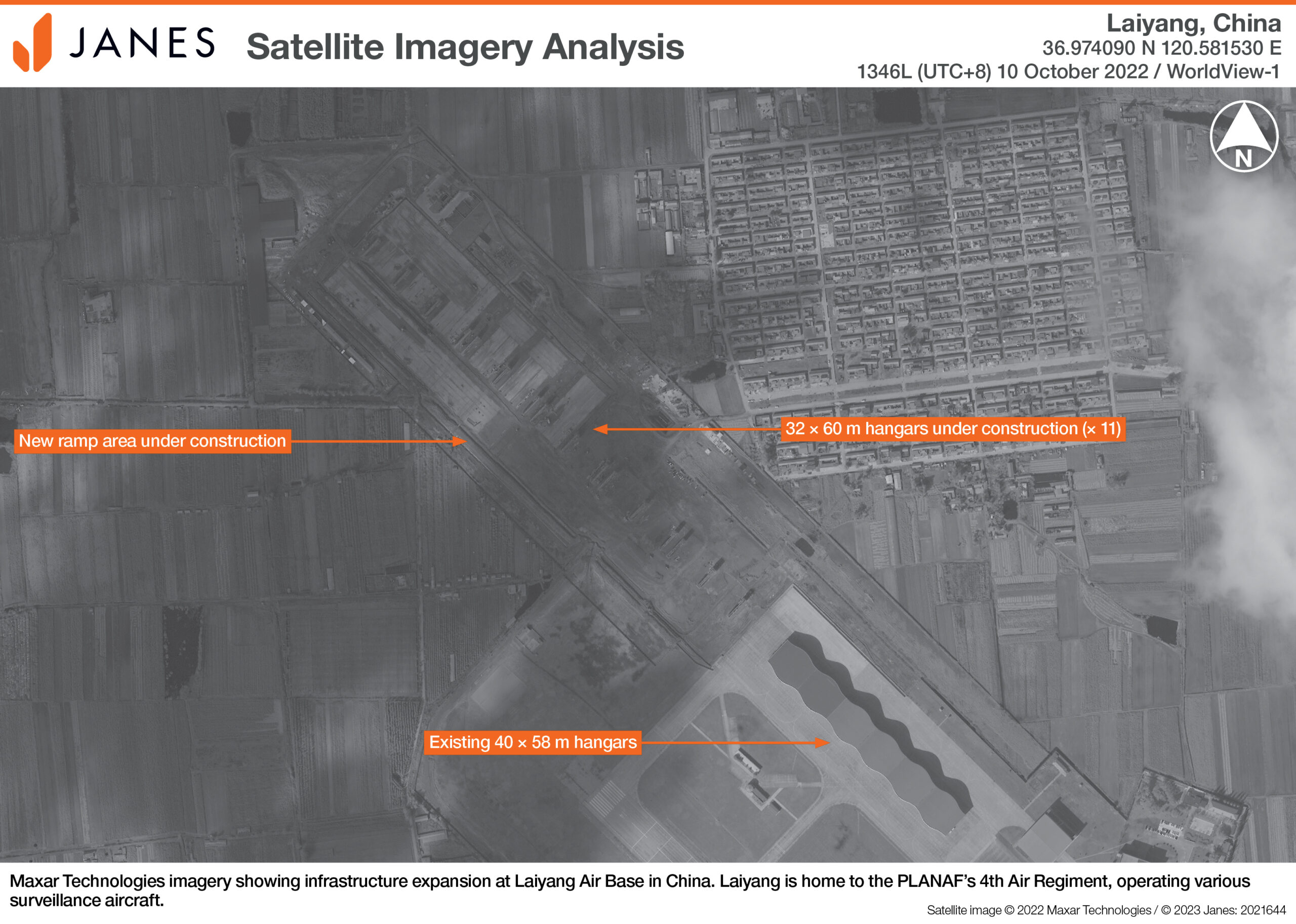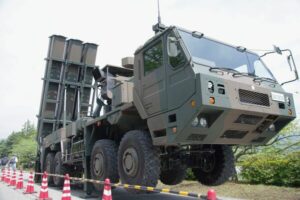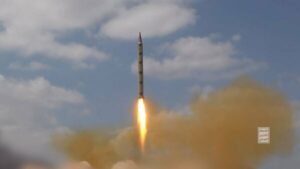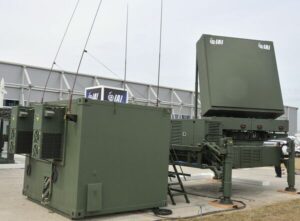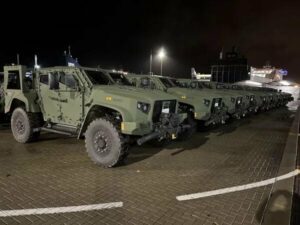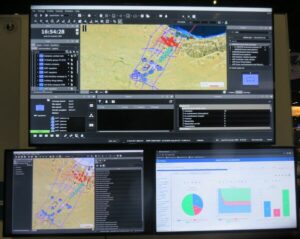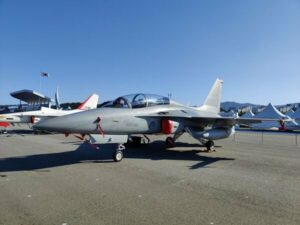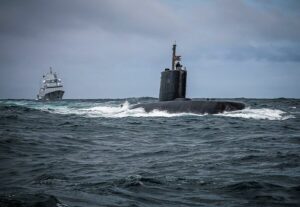02 March 2023
by Ridzwan Rahmat
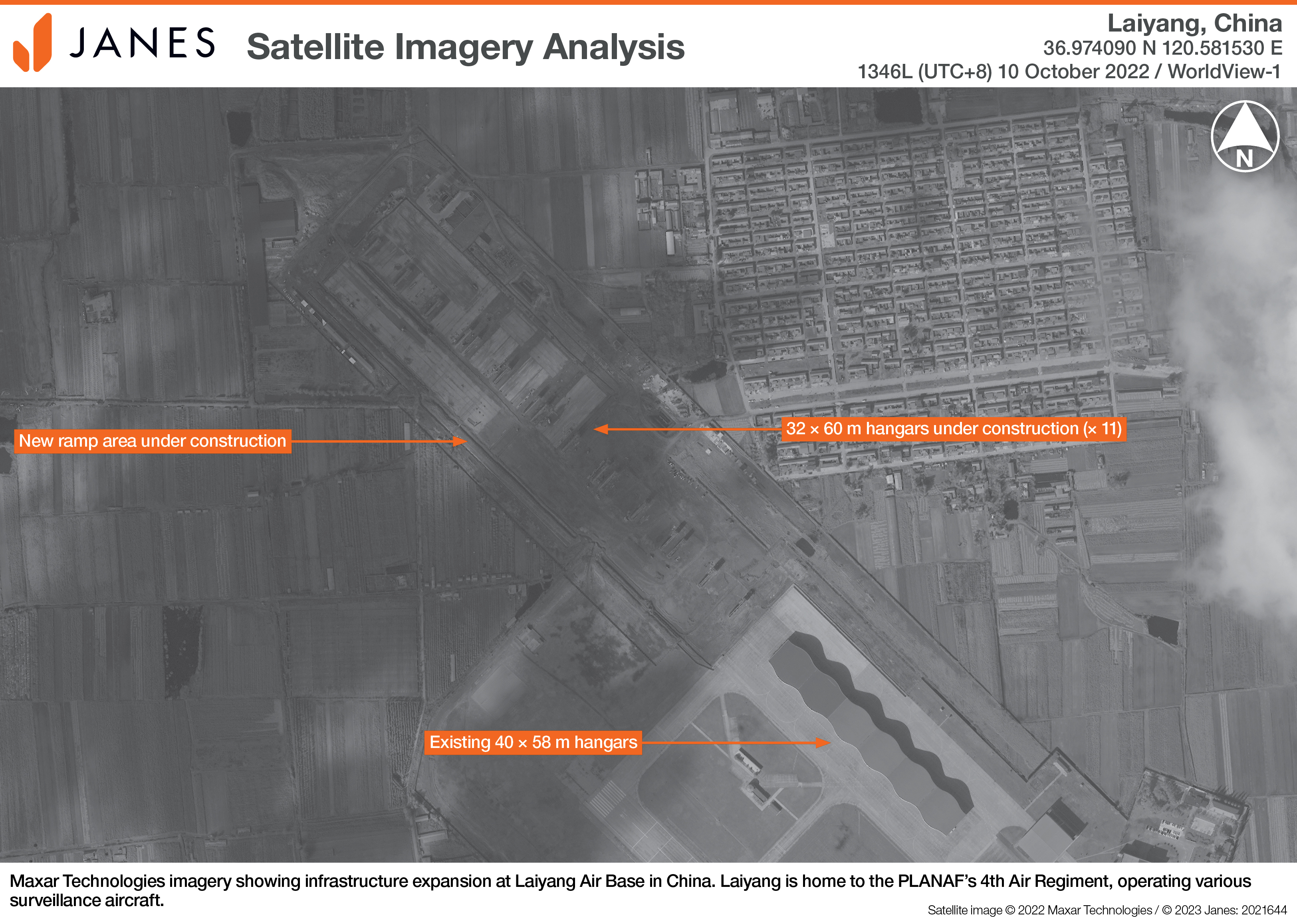
Maxar Technologies imagery showing infrastructure expansion at Laiyang Air Base in China. Laiyang is home to the PLANAF's 4th Air Regiment, operating various surveillance aircraft. (Maxar Technologies/Janes)
The People's Liberation Army Naval Air Force (PLANAF) is likely increasing the number of fixed-wing early warning, electronic intelligence (ELINT), and maritime patrol aircraft that can be operated from its Laiyang Air Base in Northeast China.
Laiyang Air Base is home to the PLANAF's 4th Air Regiment and is one of two key facilities from which the service deploys its fleet of intelligence, surveillance, and reconnaissance (ISR) airframes.
These include the Shaanxi Aircraft Corporation's (SAC's) KJ-200 airborne early warning and control (AEW&C) aircraft and the Y-8J maritime surveillance platform.
The other main facility from which these aircraft are operated is the Lingshui Air Base on Hainan Island, which is home to the PLANAF's 9th Division.
Satellite images indicate that the PLANAF has been expanding the northwest limits of the Laiyang Air Base since early 2022. It has also begun constructing at least 11 large hangars within the newly acquired space.
Each of these hangars measures approximately 32×60 m and is able to accommodate various ISR airframes including the KJ-200 and the Y-8J. The new hangars will complement the six existing 40×58 m hangars on the airbase.
The turboprop engine-powered KJ-200 is equipped with a dorsal linear phased-array radar, similar to the Saab Erieye AEW&C radar, and this is mounted on struts above its rear fuselage. If its performance is similar to the Erieye, the aircraft has a sensor range of around 450 km.
The Y-8J is a variant of China's four-engine Y-8 airframe, which in turn is derived from the Russian Antonov An-12. The Y-8J is equipped with the Racal Skymaster maritime surveillance radar, and its subvariant, the Y-8JB, is believed to be configured for ELINT missions.
Analysis
Once this expansion is completed, the PLANAF will be able to increase the frequency of maritime patrol missions it conducts from the Laiyang Air Base. This will improve China's ability to monitor the activities of aircraft and vessels that operate in the Yellow Sea (West Sea) and the East China Sea.
By virtue of its geographical location, China has long perceived its coastal military facilities as being especially vulnerable to surveillance operations from US aircraft that operate out of Japan and South Korea, both of which have close military relationships with Washington.
This perceived vulnerability will be compounded by an increase in the number of US aircraft that will soon operate in the region. In January 2023, the Japanese government announced that it has begun the construction of a new airbase on Mage Island in the southwestern province of Kagoshima. The airbase will be utilised by US carrierborne fighter jets.
As part of an effort to monitor airborne activity in its coastal approaches, Beijing declared an air-defence identification zone (ADIZ) over the East China Sea in 2013. However, this ADIZ is not legally binding, overlaps with the identification zones of Japan and South Korea, and is not recognised by the US and the neighbouring states. With this expansion of the Laiyang Air Base, the PLANAF will also be better equipped to enforce this ADIZ via intercepts, and Beijing can be expected to take a bolder stance against aircraft that are seen to be encroaching into its airspace here.
- SEO Powered Content & PR Distribution. Get Amplified Today.
- Platoblockchain. Web3 Metaverse Intelligence. Knowledge Amplified. Access Here.
- Source: https://www.janes.com/defence-news/beijing-expanding-airborne-surveillance-capabilities-over-east-china-sea
- 11
- 2022
- 2023
- a
- ability
- Able
- above
- accommodate
- acquired
- activities
- activity
- against
- AIR
- Air Force
- aircraft
- airspace
- and
- announced
- approaches
- approximately
- Army
- around
- base
- Beijing
- being
- believed
- Better
- binding
- capabilities
- China
- Close
- Complement
- Completed
- conducts
- constructing
- construction
- control
- CORPORATION
- deploys
- Derived
- Division
- Early
- East
- effort
- Electronic
- equipped
- especially
- existing
- expanding
- expansion
- expected
- facilities
- Facility
- FLEET
- Force
- Frequency
- from
- geographical
- Government
- here
- Home
- However
- HTTPS
- Identification
- images
- improve
- in
- include
- Including
- Increase
- increasing
- indicate
- Infrastructure
- Intelligence
- island
- IT
- January
- Japan
- Japanese
- Jets
- Key
- korea
- large
- likely
- limits
- location
- Long
- Main
- March
- Maritime
- measures
- Military
- missions
- Monitor
- New
- number
- ONE
- operate
- operated
- operating
- Operations
- Other
- part
- People
- perceived
- performance
- platform
- plato
- Plato Data Intelligence
- PlatoData
- radar
- range
- recognised
- region
- Relationships
- russian
- SEA
- service
- similar
- since
- SIX
- small
- Soon
- South
- South Korea
- Space
- States
- surveillance
- Take
- Technologies
- The
- to
- TURN
- us
- Variant
- various
- via
- vulnerability
- Vulnerable
- warning
- washington
- West
- which
- will
- within
- zephyrnet
- zones

